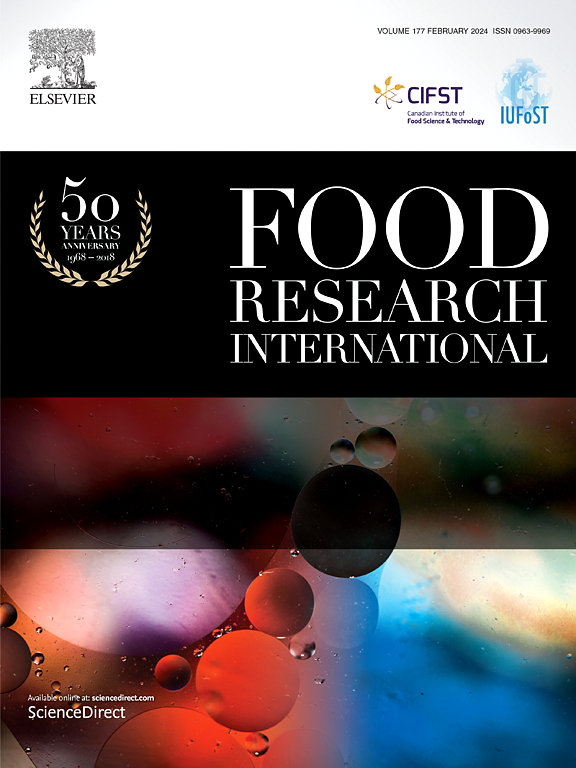Regional fingerprint, enrichment and flavor contribution of Bacillus community in Daqu for Chinese Baijiu
IF 7
1区 农林科学
Q1 FOOD SCIENCE & TECHNOLOGY
引用次数: 0
Abstract
Bacillus is an important multifunctional genus, but the enrichment and flavor contribution mechanism of this bioresource in Baijiu Daqu are still unclear. In this study, multi-omics was used to investigate the Bacillus community from the perspectives of genus, species and genes. Under the influence of fermentation process and interspecific interactions, Daqu samples from different areas will form regional Bacillus “fingerprints”. The succession process and enrichment efficiency of Bacillus in high-temperature Daqu were mainly regulated by moisture. In the high-temperature fermentation environment, Bacillus community mainly contributed to baked aroma (pyrazines), creamy aroma (acetoin) and sauce aroma (guaiacol), but each Bacillus species metabolized different biomarkers and formed different sensory characteristics. The flavor contribution of Bacillus was influenced by both internal genes and external environment: Some strains have a deletion of the acoA/B gene, which reduces their ability to synthesize 2,3-butanediol; Bacillus subtilis had relatively lower GC content of the alsD (43.4 %), padC (39.3 %) and tdh (45.8 %) genes than other species, resulting in weaker stability under high-temperature environmental stress. This study offers novel insights into the distribution pattern and flavor contribution characteristics of different Bacillus species, while establishing a critical reference for the refined utilization of Bacillus bioresource.

中国白酒大曲中芽孢杆菌群落的区域指纹、富集和风味贡献
芽孢杆菌是一种重要的多功能菌属,但这种生物资源在白酒大曲中的富集和风味贡献机制尚不清楚。本研究采用多组学技术,从属、种和基因的角度对芽孢杆菌群落进行了研究。在发酵过程和种间相互作用的影响下,不同地区的大曲样品会形成区域性的芽孢杆菌“指纹”。高温大曲中芽孢杆菌的演替过程和富集效率主要受水分调控。在高温发酵环境下,芽孢杆菌群落主要贡献烘烤香气(吡嗪类)、奶油香气(乙托因)和酱香气(愈创木酚),但每种芽孢杆菌代谢不同的生物标志物,形成不同的感官特征。芽孢杆菌的风味贡献受内部基因和外部环境的双重影响:部分菌株缺失acoA/B基因,导致其合成2,3-丁二醇的能力降低;枯草芽孢杆菌的alsD(43.4%)、padC(39.3%)和tdh(45.8%)基因GC含量相对较低,在高温环境胁迫下稳定性较差。本研究对不同芽孢杆菌种类的分布格局和风味贡献特征有了新的认识,同时为芽孢杆菌生物资源的精细化利用提供了重要参考。
本文章由计算机程序翻译,如有差异,请以英文原文为准。
求助全文
约1分钟内获得全文
求助全文
来源期刊

Food Research International
工程技术-食品科技
CiteScore
12.50
自引率
7.40%
发文量
1183
审稿时长
79 days
期刊介绍:
Food Research International serves as a rapid dissemination platform for significant and impactful research in food science, technology, engineering, and nutrition. The journal focuses on publishing novel, high-quality, and high-impact review papers, original research papers, and letters to the editors across various disciplines in the science and technology of food. Additionally, it follows a policy of publishing special issues on topical and emergent subjects in food research or related areas. Selected, peer-reviewed papers from scientific meetings, workshops, and conferences on the science, technology, and engineering of foods are also featured in special issues.
 求助内容:
求助内容: 应助结果提醒方式:
应助结果提醒方式:


